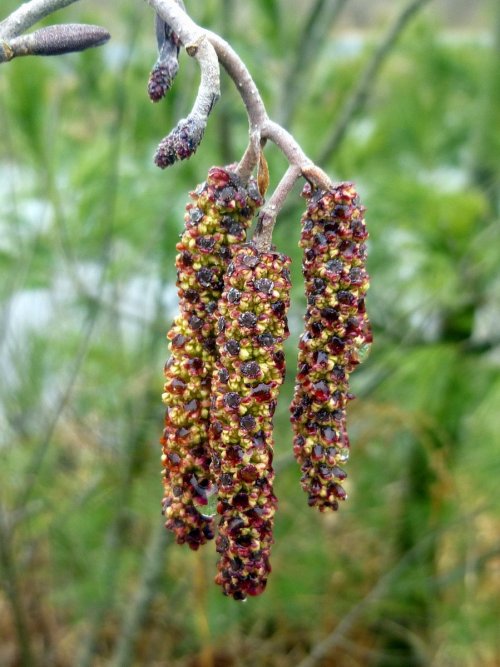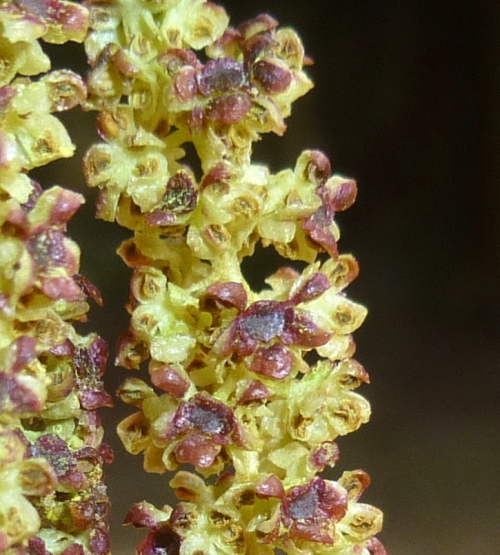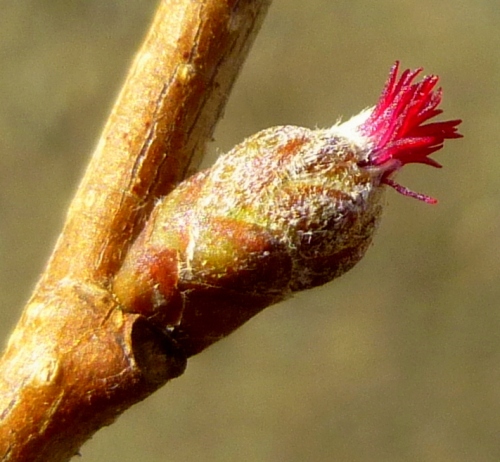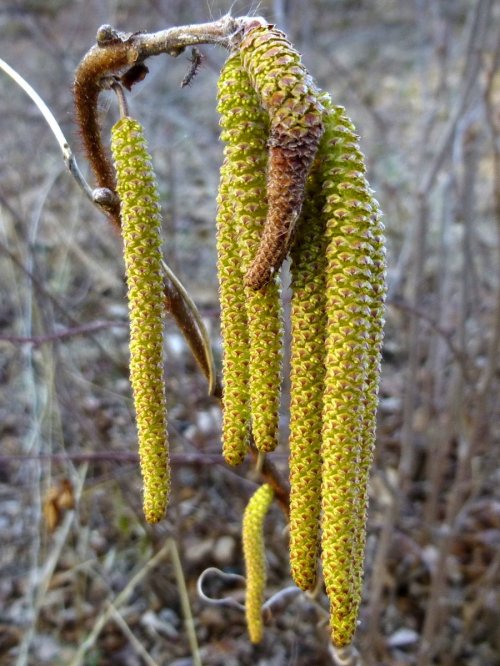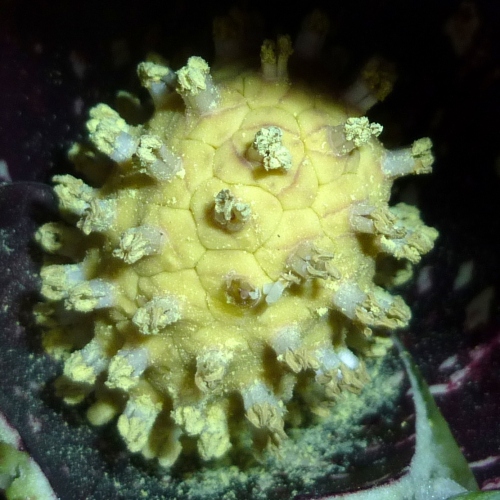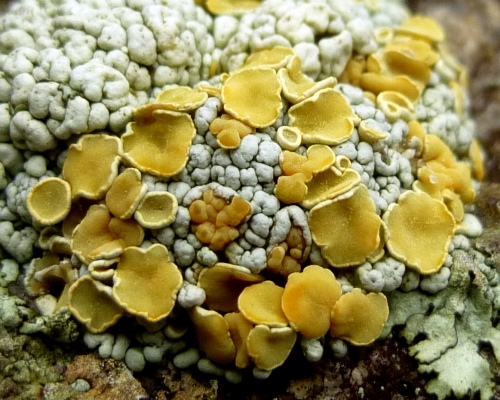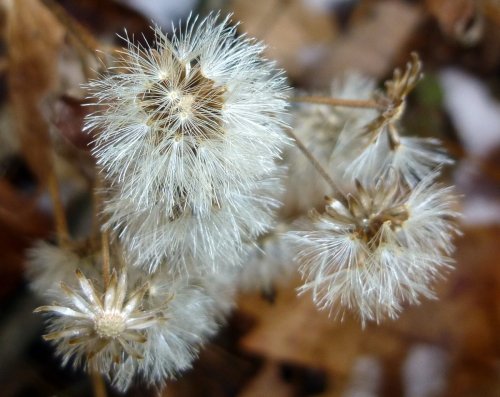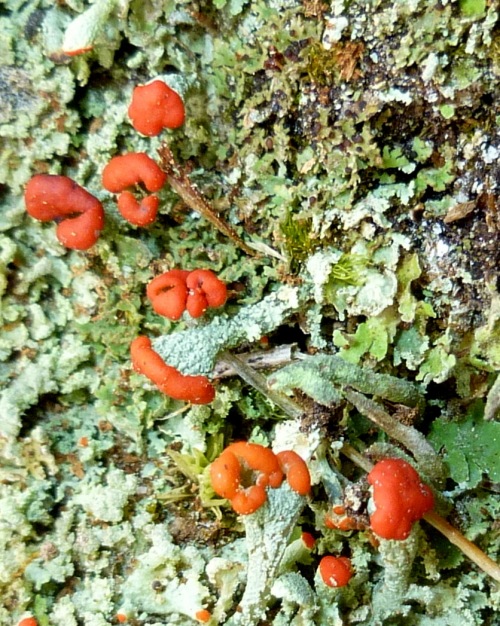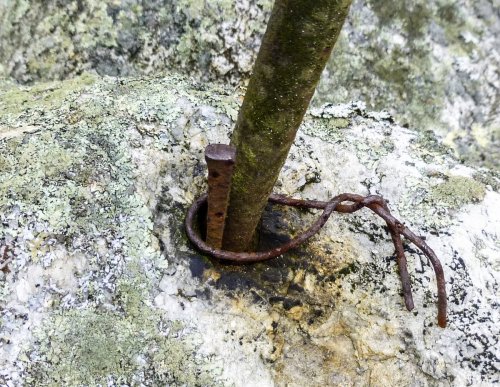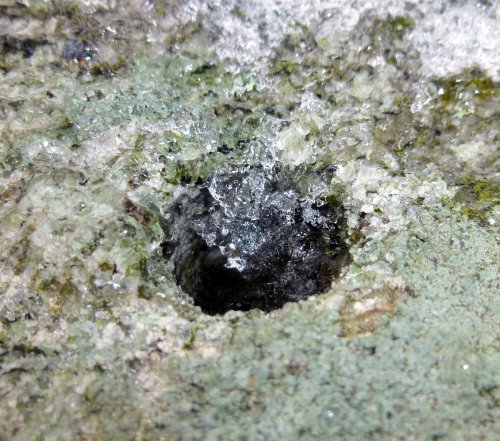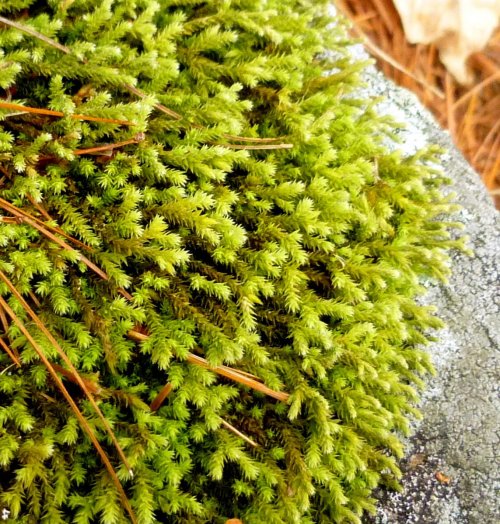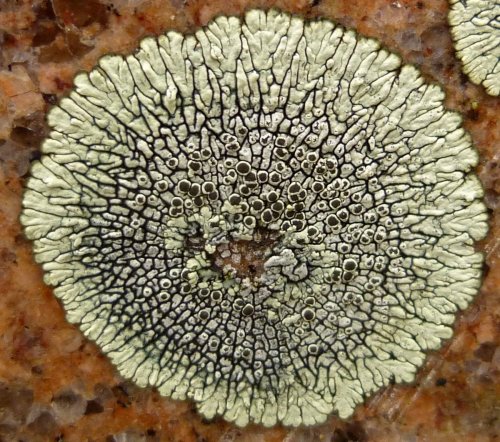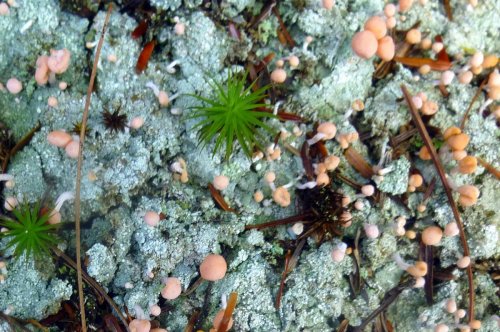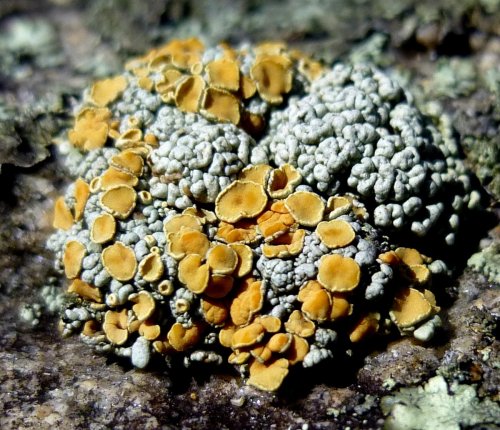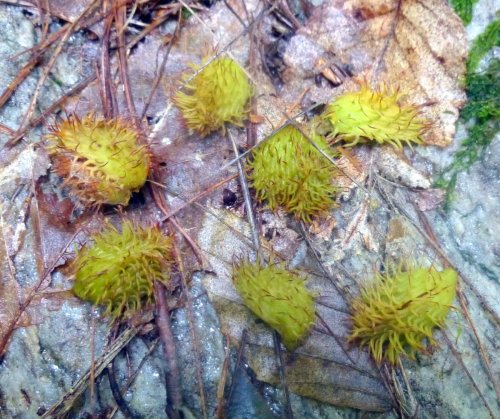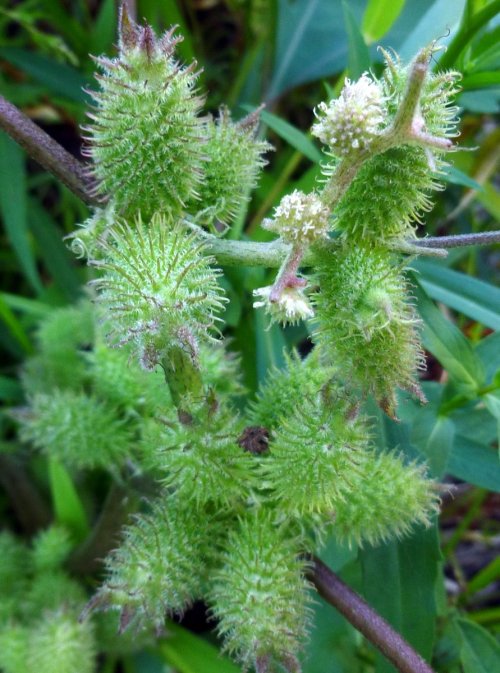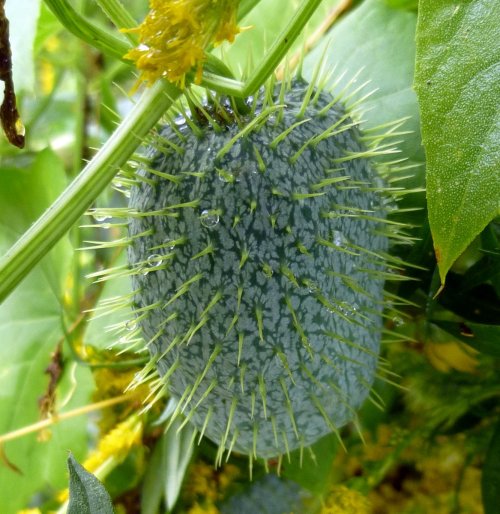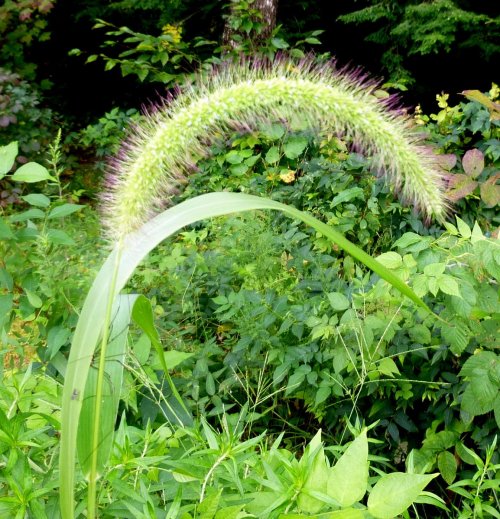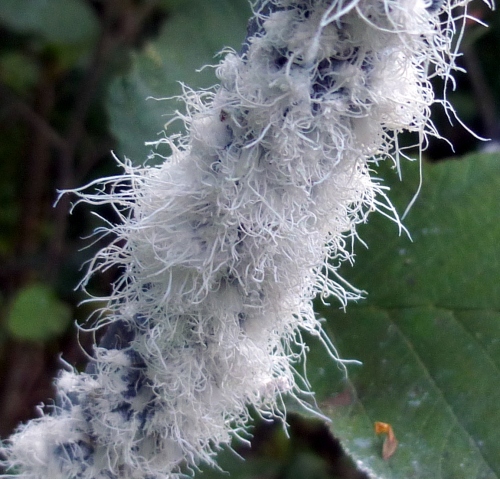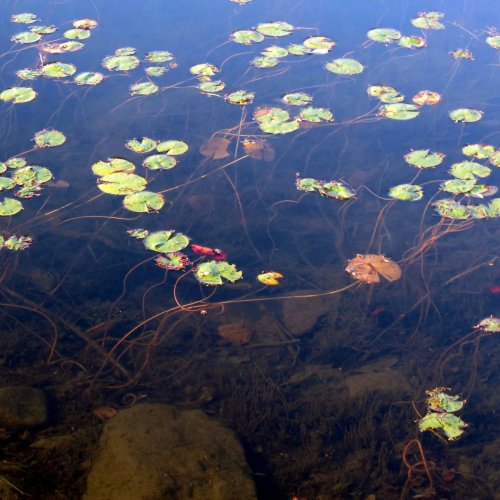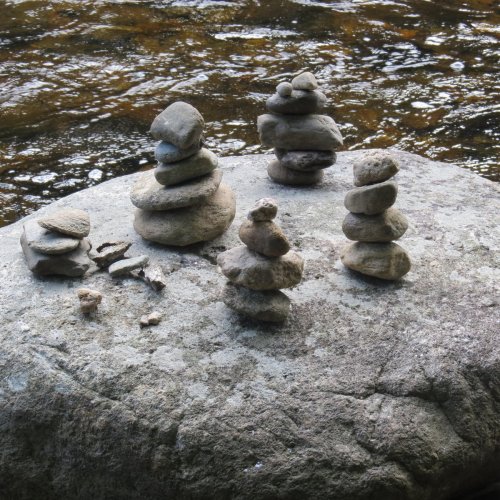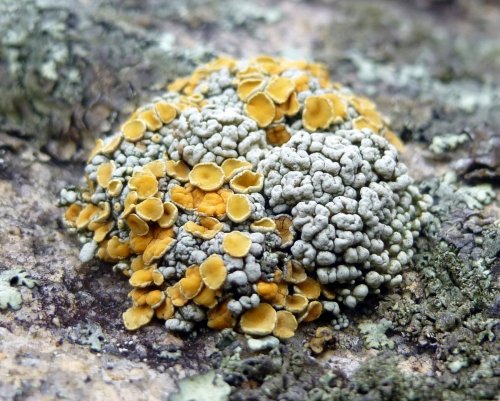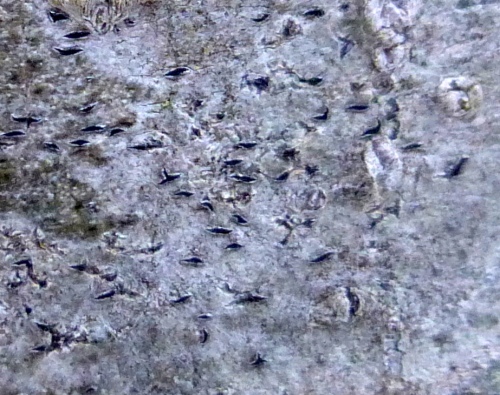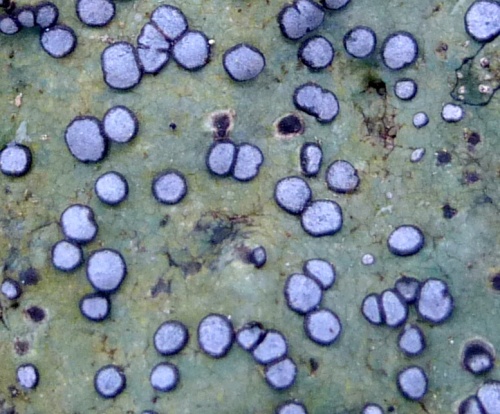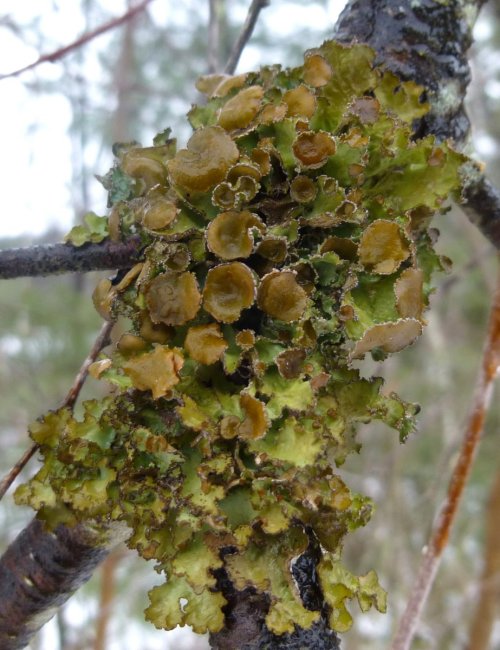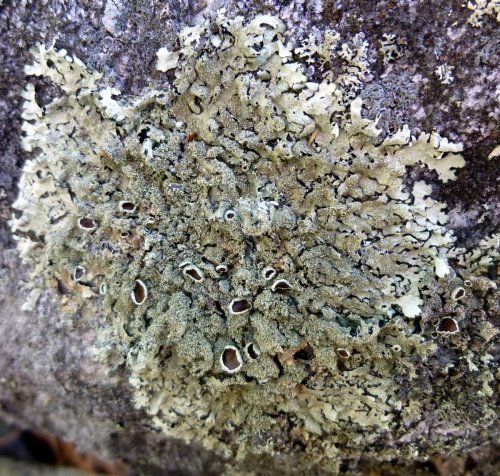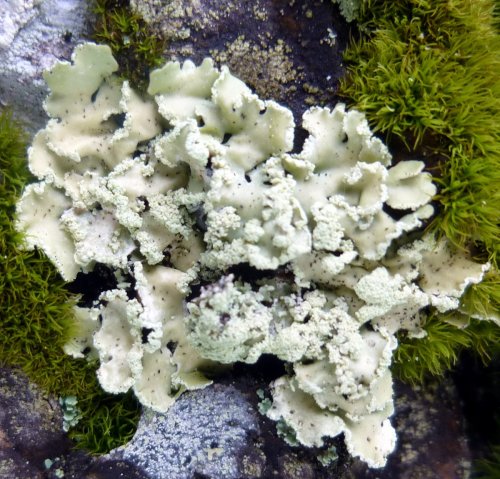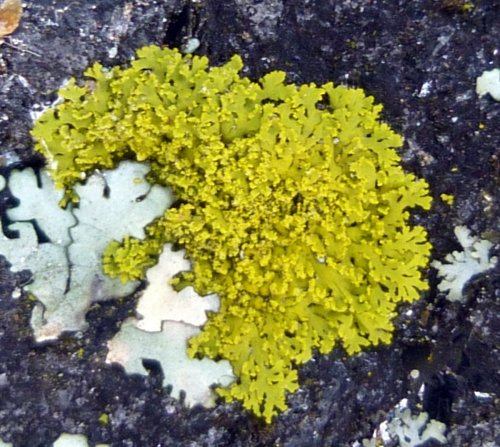Sometimes you can lose yourself in a flower’s beauty, especially when it’s the first crocus of the season.
How can you not have a spring in your step and a smile on your face after seeing something like this?
The male (staminate) flowers of speckled alder (Alnus incana) have just started opening, making the forest edges look as if someone has hung jewels from the bushes. Soon they will release their pollen and start a new generation of alders.
Male speckled alder catkins viewed up close reveal brown and purple scales. These scales are on short stalks and surround a central axis. There are three flowers beneath each scale, each with a lobed calyx cup and three to five stamens with anthers covered in yellow pollen.
The tiny female (pistillate) catkins of speckled alder consist of scales that cover two flowers, each having a pistil and a scarlet style. Since speckled alders are wind pollinated the flowers have no petals because petals would hinder the process and keep male pollen grains from landing on the female flowers. These female catkins will eventually become the cone-like, seed bearing structures (strobiles) that are so noticeable on alders.
I’ve known for a long time that the female flowers of the American hazelnut (Corylus americana) were among the smallest I’d seen, but I wondered exactly how small. To find out I measured the tiny bud that the hair-like, scarlet pistils protrude from with the same vernier calipers I use to measure precision machine parts. I found that the bud diameter is almost the same as a single strand of spaghetti, or about 4 thousandths of an inch (.004).
The catkins full of male (staminate) American hazelnut (Corylus americana) flowers don’t have the brown and purple scales that speckled alder catkins do. They are longer and more golden in color, but they work the same way as the alder catkins described previously. They seem to glow in the late afternoon sun.
Forsythia buds are showing some color. It’s a very common shrub and it won’t be long before nearly every street in town shouts spring, thanks to its cheery yellow blooms.
The witch hazels at a local park have finally completely unfurled their strap-like petals. I’ve shown these flowers at various stages of development over the last month and have been calling the shrub “Vernal” witch hazel, which isn’t correct. Our native vernal witch hazel (Hamamelis vernalis) only grows in the southern and central United States. I’m guessing that the shrub pictured, even though it does bloom in spring, is most likely a Japanese witch hazel (Hamamelis japonica), because it is extremely fragrant.
If you don’t mind getting down on your stomach in the kind of swampy ground that they like to grow in you can sometimes get a peek inside the spathe of a skunk cabbage (Symplocarpus foetidus) to see its flowers. A spathe is just a modified leaf or bract which kind of wraps around itself and protects the flower bud. As the plant matures a gap opens in the spathe to let in the insects which will pollinate the flowers. The one on the right has a good sized hole that the lens of my Panasonic Lumix might just fit into.
Well, the lens fit the hole in the skunk cabbage spathe but the flash didn’t but luckily there was a broken one nearby that allowed a peek at the spadix with all of its flowers-something very few people ever get to see. Each flower on the spadix has four yellowish sepals. The male stamens grow up through the sepals and release their pollen before the female style and pistil grow out of the flower’s center to catch any pollen that visiting insects might carry from other plants.
The scattered rock posy lichen (Rhizoplaca subdiscrepans) isn’t a flower but it has both the name and beauty of one, so I let it have a place here. This lichen keeps its pale orange fruiting bodies (apothecia) year round, so seeing it in winter is like finding a flower in the snow.
When the female flowers of red maples (Acer rubrum) just start to poke out of their protective bud scales they remind me of female American hazelnut flowers, though they are bigger and much easier to see.
As I was admiring the red color of the female red maple flowers a robin flew down just a few feet away and began kicking up dead leaves as if he wanted to show me what the color red was really all about. Finally satisfied that he had been admired too, off he flew. My color finding software actually sees more brown than red on his breast in this photo, but he doesn’t have to know that. Let him strut.
The spring came suddenly, bursting upon the world as a child bursts into a room, with a laugh and a shout and hands full of flowers. ~Henry Wadsworth Longfellow
Thanks for coming by.


